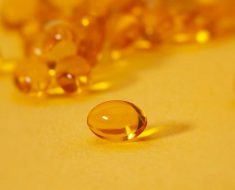- Researchers say blood pressure tends to rise as people get older, but there are things you can do to reduce your risk.
- Experts note that you can have high blood pressure, also known as hypertension, without developing symptoms.
- They say people should exercise regularly, eat healthy meals, and get enough sleep to help avoid high blood pressure.
Almost half of American adults have high blood pressure.
The older you are, the more likely you are to develop it.
The American Heart Association (AHA) reports that the lifetime risk of high blood pressure from age 20 to 85 is between 69 and 86 percent.
Does that mean that if you live long enough, you’re destined to develop high blood pressure?
Dr. Jim Liu, a cardiologist at The Ohio State University Wexner Medical Center, told Healthline that age is one of many factors in rising blood pressure.
But he doesn’t consider high blood pressure to be a normal part of aging.
In fact, there are quite a few things you can do to lower your risk.
Lifetime risk of high blood pressure
According to the AHA, lifetime risk of high blood pressure is:
- 86 percent for black males
- 85 percent for black females
- 83 percent for white males
- 69 percent for white females
In an
Included were 32,000 participants from ages 5 to 98. They found that differences between men and women start early and persist with aging.
Women were found to have a steeper rise in blood pressure, starting in their 30s and continuing throughout life.
“Women typically lag behind men in terms of age of onset for cardiovascular disease,” Liu said.
“This article indicates there may be some blood pressure changes earlier on in life for women that may contribute to this difference. I wouldn’t say this article should cause any sweeping changes to how we currently treat hypertension, but it’s important for doctors and women to continue to be vigilant in monitoring blood pressure,” he explained.
Gabriela Nakano, MSN, RN, AGACNP-BC, CCRN, CSC, is a cardiovascular nurse practitioner at St. Jude Medical Center in Orange County, California.
Nakano told Healthline that hormonal changes after menopause increase the risk of heart disease for women.
“This is why it is important for women to start being active at any age and maintain a healthy lifestyle throughout,” she said.
Why it happens
“As you age, the vascular system changes. This includes your heart and blood vessels. In the blood vessels, there’s a reduction in elastic tissue in your arteries, causing them to become stiffer and less compliant. As a result, your blood pressure increases,” Nakano said.
But there’s a lot more to it than age.
“Variables include things like genetic factors, lifestyle factors, medication-related, and other medical comorbidities,” Liu explained.
“Common medical conditions that lead to hypertension include sleep apnea and kidney disease,” he said.
Lifestyle factors include smoking, alcohol consumption, physical inactivity, obesity, and sleep deprivation.
Salt is a necessary nutrient, but excessive salt can be a problem.
“The American Heart Association recommends less than 2.3 grams of sodium per day for all adults, not just those with hypertension. Some with hypertension may need a more stringent goal of 1.5 grams of sodium per day, depending on how controlled their hypertension is,” Liu said.
Monitoring blood pressure
You can have high blood pressure and not know it.
That’s because you may not have symptoms until there’s a health crisis, such as a stroke or heart attack.
A healthy blood pressure reading is one where the systolic blood pressure (the top number) is less than 120 and diastolic blood pressure (the bottom number) is less than 80.
Systolic blood pressure of 120 to 129 and diastolic blood pressure higher than 80 is considered elevated. Anything above that is considered hypertension.
Liu recommends that all adults over age 18 have their blood pressure screened at least once a year. Those with diagnosed high blood pressure should be checked more frequently.
“Ideally, patients with hypertension should monitor and record their blood pressures at home on a daily basis,” he said.
Nakano says that over-the-counter blood pressure monitors aren’t always trustworthy.
She suggests sitting down for 5 minutes, then taking your blood pressure three times. If you have a good machine, the three readings should be similar.
Risk factors you can change
“For the most part, the only thing that most people can control are the lifestyle factors, namely diet and exercise,” Liu said.
“The DASH (Dietary Approaches to Stop Hypertension) diet is a common diet used to lower blood pressure. Other diets, such as vegetarian and Mediterranean diets, have also been shown to be effective,” he said.
Liu also advises to:
- Read nutrition labels on prepared foods, as they can contain a lot of sodium.
- Limit alcohol. That means no more than two drinks a day for men and one for women.
- Get 90 to 150 minutes of aerobic exercise per week.
- Monitor your weight. Obesity is an independent risk factor for high blood pressure.
- Work on getting a good night’s sleep. Sleep deprivation, or getting less than 6 hours of uninterrupted sleep at night, can increase blood pressure. See your doctor if you suspect you have sleep apnea.
- Get regular health checkups.
“Lifestyle measures should always be instituted regardless of how high blood pressure is,” Liu said.
“However, if average blood pressure is consistently above 140/90, medications are generally started. In some people with additional cardiovascular risk factors, that threshold is even lower. It is possible to come off blood pressure medications if blood pressure is further controlled with lifestyle measures,” he added.
Nakano cautions that you may not “feel” high blood pressure.
“Be mindful of it, because if not taken care of, it will lead to heart failure in the long term,” she said.

Source: Read Full Article





